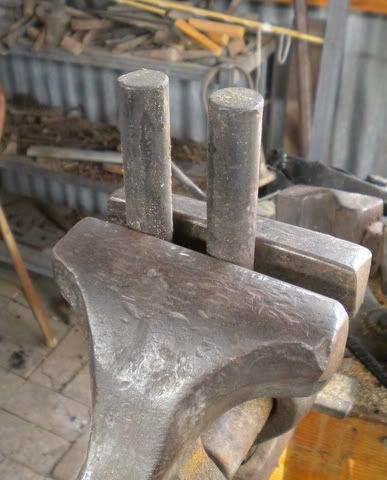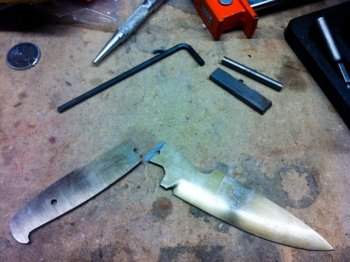Doug Lester
Well-Known Member
Having spent the last two days straightening blades that warped during the post hardening grind, I've got a question. My method was to clamp the blades to angle iron with C clamps while shimming them with pennies and heating the blades at just below the tempering temperature for 90 minutes. The question is does the heat applied while clamping really reduce the stress? Does it allow the warp to be removed without as much counter bending? If the blade was straightened in a vice with three rods to flex the blades without any heat would it be better to reheat the blade to just below or at the tempering temperature after straightening? I generally only use the vice and rod method before heat treating.
Doug
Doug



